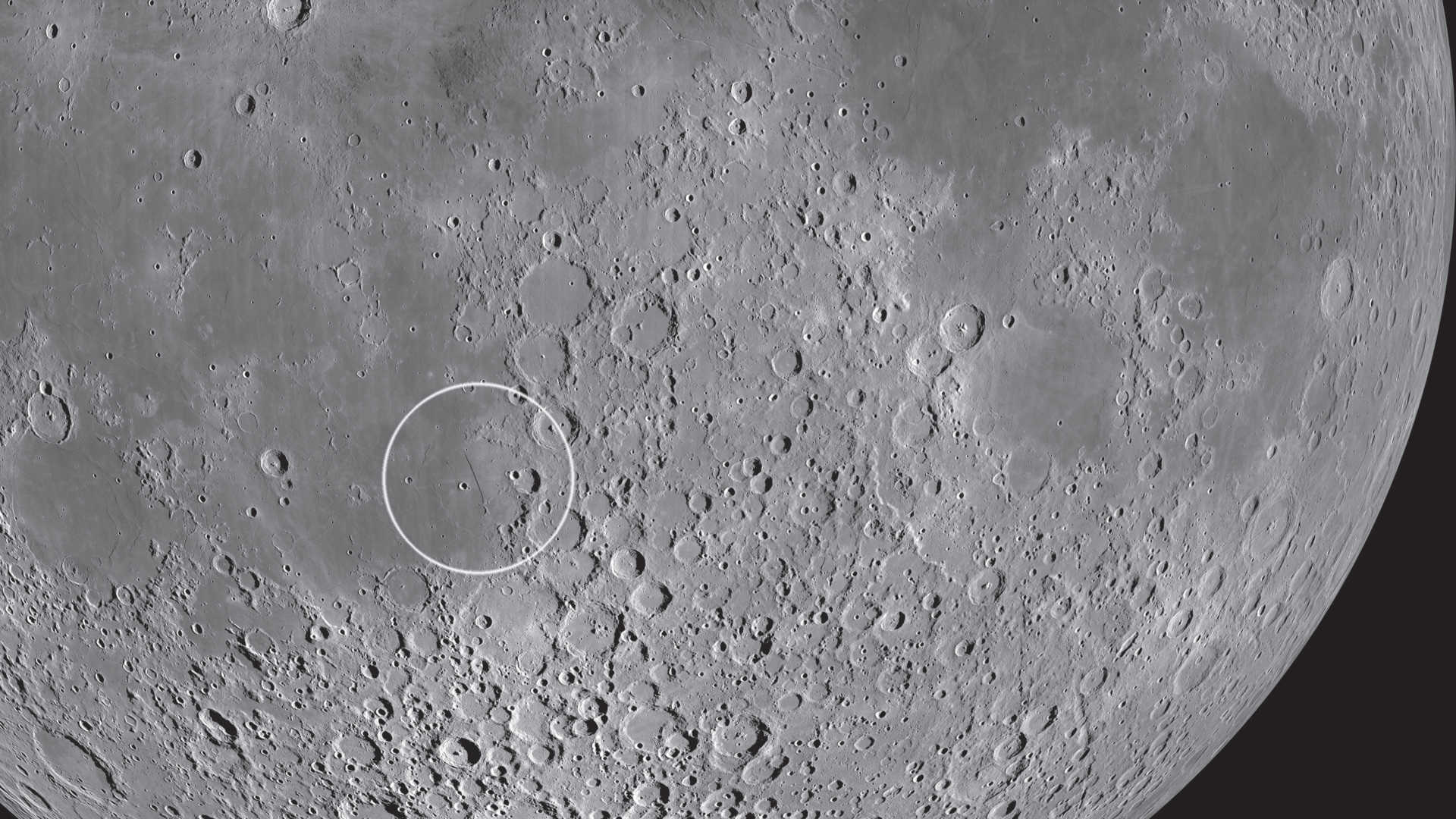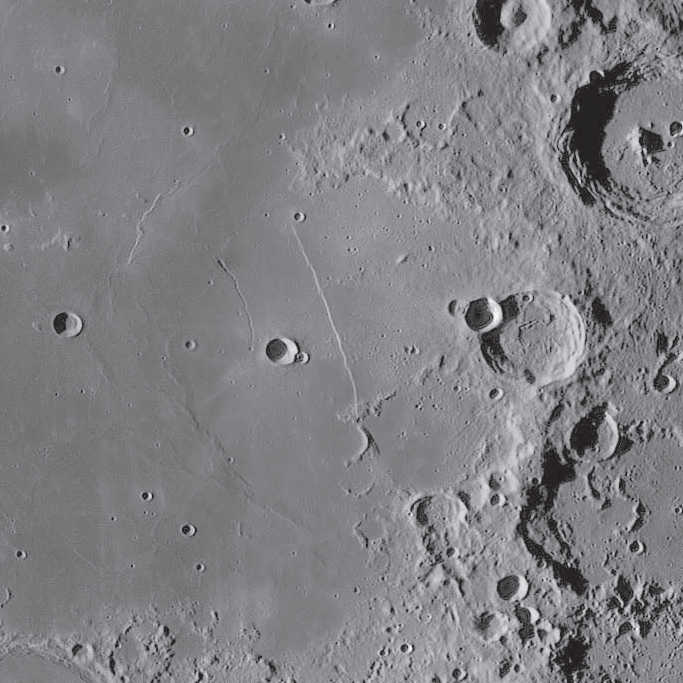Rupes Recta and a sword on the Moon
Compare the view of this huge scarp at the edge of Mare Ibrium eight and twenty-one days after New Moon.
 Rupes Recta is easily recognisable as a thin black line. NASA/GSFC/Arizona State University
Rupes Recta is easily recognisable as a thin black line. NASA/GSFC/Arizona State UniversityIn lunar nomenclature, the English term scarp for Rupes is somewhat misleading. In fact, it is translated in a number of different ways: escarpment, slope or cliff. Essentially, there are two types of so-called scarps: craters or crater segment remnants, or faults as a result of subsidence at the edge of mare such as Rupes Recta (Straight Wall).
An imposing sight
 At waning Moon, the formation is also
known as Huygens’ Sword. NASA/GSFC/Arizona State University
At waning Moon, the formation is also
known as Huygens’ Sword. NASA/GSFC/Arizona State UniversityIn the case of Rupes Recta, the surface of the Moon has sunk over a length of 143 km, probably a secondary effect of the impact that created Mare Imbrium. If you were to stand at the foot of Rupes Recta, you would see a slope rising to a height of 500 m at an angle of around 30°, which disappears into the distance to the left and right due to the Moon's curvature – a truly imposing sight.
Even through a telescope with a small aperture, the shadow of the slope can be easily seen as a thin black line at waxing Moon. The sight is deceptive as it seems to the observer to be a steep face.
A sword on the Moon
At waning Moon, the view is quite different, because now the slopes of the scarp are lit by the Sun, and Rupes Recta stands out as a bright line from the dark plains of Mare Nubium (Sea of Clouds). Now the formation is also known as Huygens’ Sword. The small elevation just to the south of the fault line looks like a handle, so that the whole formation appears to shine like a sword in the evening lunar sunlight. In 1686, Dutch astronomer Christaan Huygens observed and sketched this sight.
Best visibility 8 or 21 days after New Moon
Author: Lambert Spix / Licence: Oculum-Verlag GmbH
